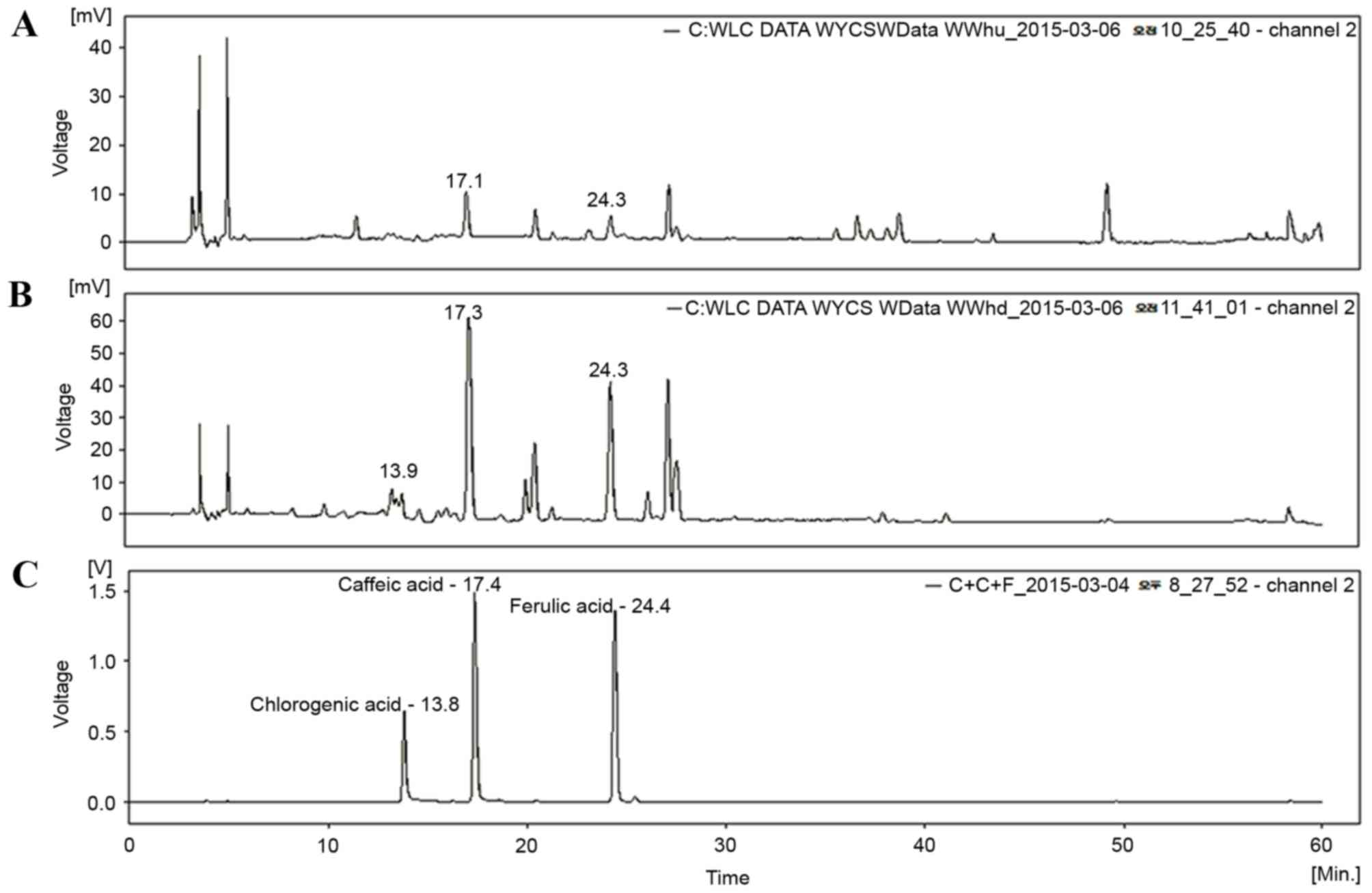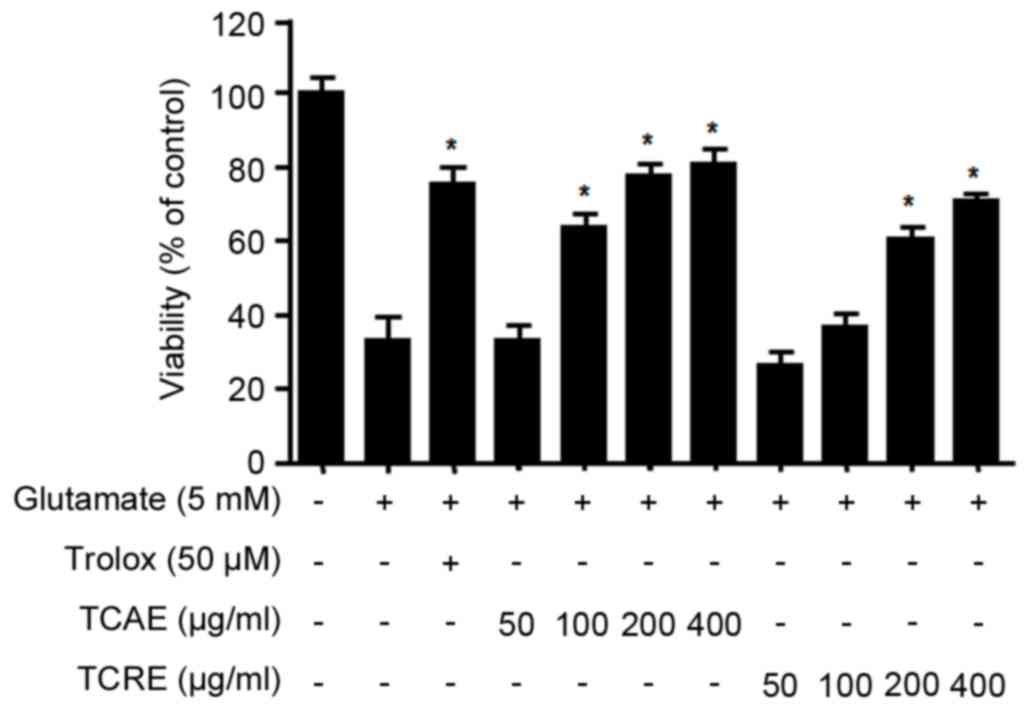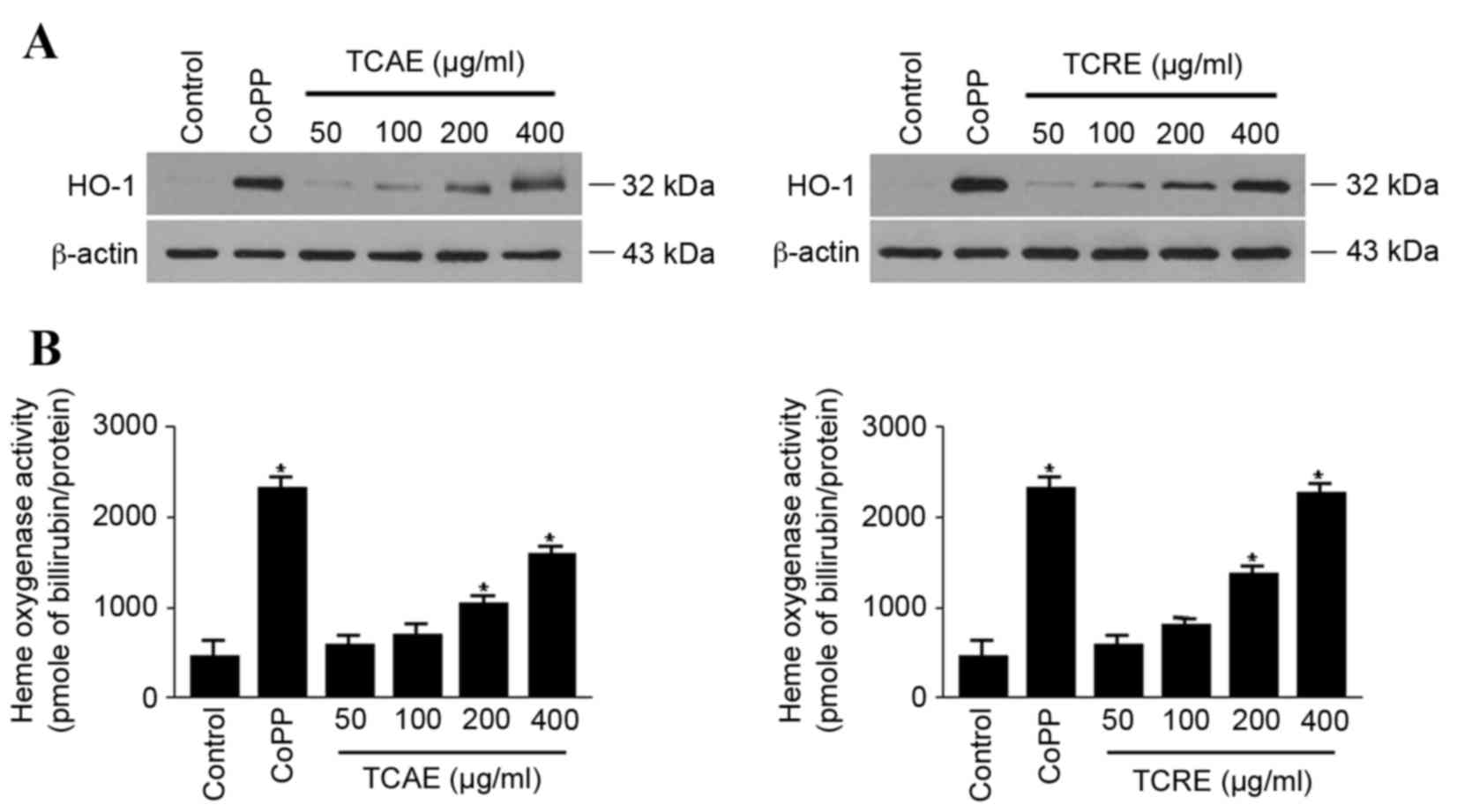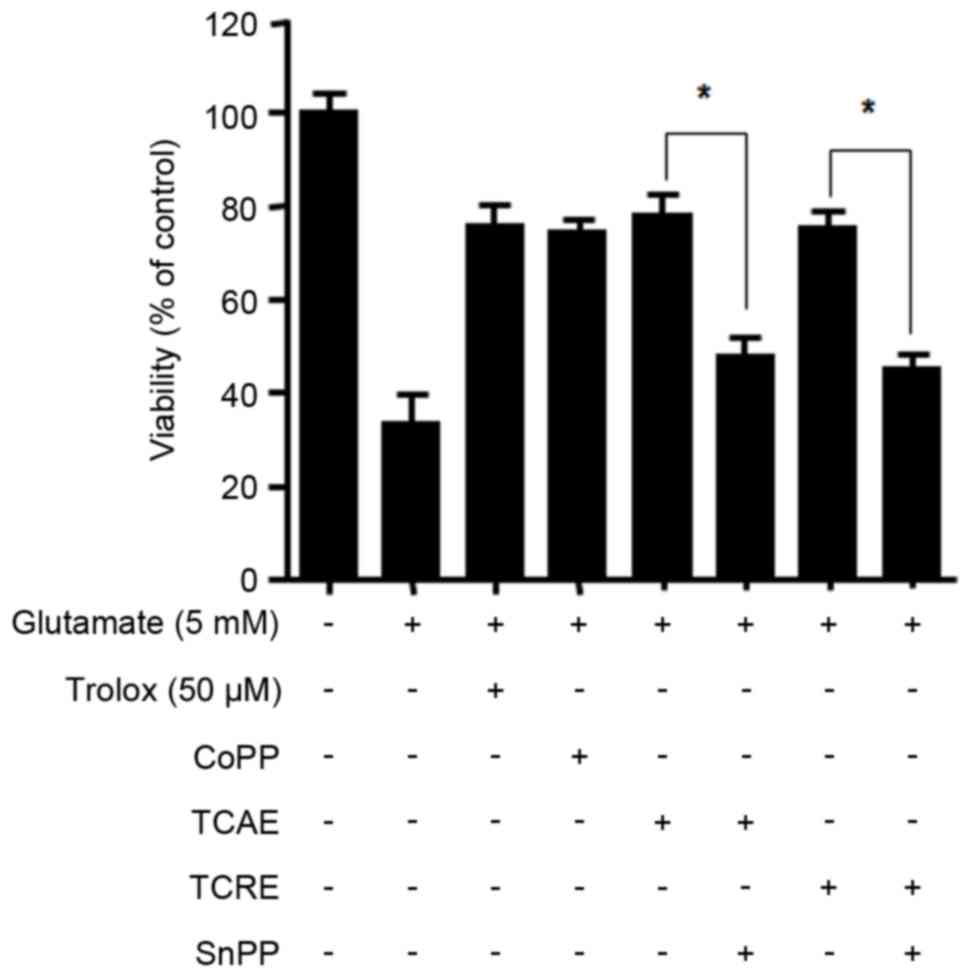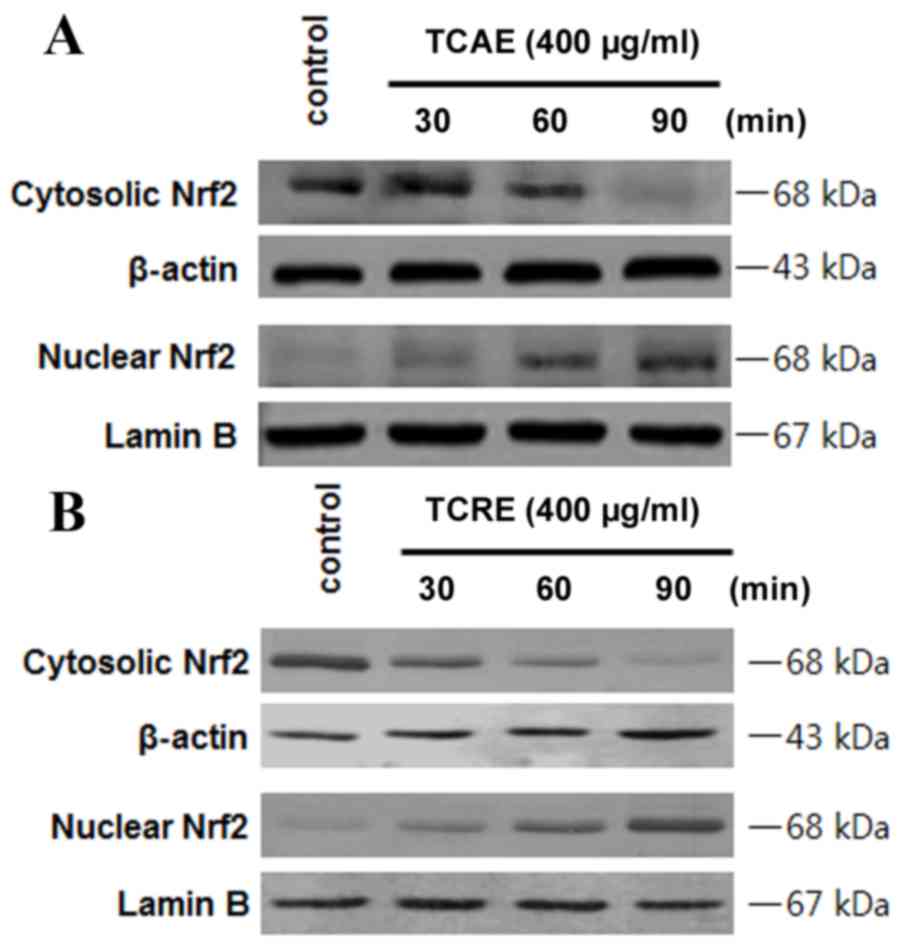|
1
|
Uttara B, Singh AV, Zamboni P and Mahajan
RT: Oxidative stress and neurodegenerative diseases: A review of
upstream and downstream antioxidant therapeutic options. Curr
Neuropharmacol. 7:65–74. 2009. View Article : Google Scholar : PubMed/NCBI
|
|
2
|
Schubert D and Piasecki D: Oxidative
glutamate toxicity can be a component of the excitotoxicity
cascade. J Neurosci. 21:7455–7462. 2001.PubMed/NCBI
|
|
3
|
Davis JB and Maher P: Protein kinase C
activation inhibits glutamate-induced cytotoxicity in a neuronal
cell lines. Brain Res. 652:169–173. 1994. View Article : Google Scholar : PubMed/NCBI
|
|
4
|
Murphy TH, Miyamoto M, Sastre A, Schnaar
RL and Coyle JT: Glutamate toxicity in a neuronal cell line
involves inhibition of cystine transport leading to oxidative
stress. Neuron. 2:1547–1558. 1989. View Article : Google Scholar : PubMed/NCBI
|
|
5
|
Rössler OG, Bauer I, Chung HY and Thiel G:
Glutamate-induced cell death of immortalized murine hippocampal
neurons: Neuroprotective activity of heme oxygenase-1, heat shock
protein 70 and sodium selenite. Neurosci Lett. 362:253–257. 2004.
View Article : Google Scholar : PubMed/NCBI
|
|
6
|
Cabell L, Ferguson C, Luginbill D, Kern M,
Weingart A and Audesirk G: Differential induction of heme oxygenase
and other stress proteins in cultured hippocampal astrocytes and
neurons by inorganic lead. Toxicol Appl Pharmacol. 198:49–60. 2004.
View Article : Google Scholar : PubMed/NCBI
|
|
7
|
Satoh T, Baba M, Nakatsuka D, Ishikawa Y,
Aburatani H, Furuta K, Ishikawa T, Hatanaka H, Suzuki M and
Watanabe Y: Role of heme oxygenase-1 protein in the neuroprotective
effects of cyclopentenone prostaglandin derivatives under oxidative
stress. Eur J Neurosci. 17:2249–2255. 2003. View Article : Google Scholar : PubMed/NCBI
|
|
8
|
Itoh K, Chiba T, Takahashi S, Ishii T,
Igarashi K, Katoh Y, Oyake T, Hayashi N, Satoh K, Hatayama I, et
al: An Nrf2/small Maf heterodimer mediates the induction of phase
II detoxifying enzyme genes through antioxidant response elements.
Biochem Biophys Res Commun. 236:313–322. 1997. View Article : Google Scholar : PubMed/NCBI
|
|
9
|
Ishii T, Itoh K, Takahashi S, Sato H,
Yanagawa T, Katoh Y, Bannai S and Yamamoto M: Transcription factor
Nrf2 coordinately regulates a group of oxidative stress-inducible
genes in macrophages. J Biol Chem. 275:16023–16029. 2000.
View Article : Google Scholar : PubMed/NCBI
|
|
10
|
Choi JH, Shin KM, Kim NY, Hong JP, Lee YS,
Kim HJ, Park HJ and Lee KT: Taraxinic acid, a hydrolysate of
sesquiterpene lactone glycoside from the Taraxacum coreanum NAKAI,
induces the differentiation of human acute promyelocytic leukemia
HL-60 cells. Biol Pharm Bull. 25:1446–1450. 2002. View Article : Google Scholar : PubMed/NCBI
|
|
11
|
Lee MH, Kang H, Lee K, Yang G, Ham I, Bu
Y, Kim H and Choi HY: The aerial part of Taraxacum coreanum extract
has an anti-inflammatory effect on peritoneal macrophages in vitro
and increases survival in a mouse model of septic shock. J
Ethnopharmacol. 146:1–8. 2013. View Article : Google Scholar : PubMed/NCBI
|
|
12
|
Lee DS, Ko W, Kim DC, Kim YC and Jeong GS:
Cudarflavone B provides neuroprotection against glutamate-induced
mouse hippocampal HT22 cell damage through the Nrf2 and PI3K/Akt
signaling pathways. Molecules. 19:10818–10831. 2014. View Article : Google Scholar : PubMed/NCBI
|
|
13
|
Motterlini R, Foresti R, Intaglietta M and
Winslow RM: NO-mediated activation of heme oxygenase: Endogenous
cytoprotection against oxidative stress to endothelium. Am J
Physiol. 270:H107–H114. 1996.PubMed/NCBI
|
|
14
|
Li XP, Yu J, Luo JY, Li HS, Han FJ, Chen
XG and Hu ZD: Simultaneous determination of chlorogenic acid,
caffeic acid, ferulic acid, protocatechuic acid and protocatechuic
aldehyde in Chinese herbal preparation by RP-HPLC. Chem Pharm Bull.
52:1251–1254. 2004. View Article : Google Scholar : PubMed/NCBI
|
|
15
|
Ling Y, Zhang Y, Cai S, Xiao Y, Cai S and
Zheng J: Chemical constituents of Taraxacum sinicum Kitag. Zhongguo
Zhing Yao Za Zhi. 23:232–234. 1998.(In Chinese).
|
|
16
|
Richards AJ: Eutriploid facultative
agamospermy in Taraxacum. New Phytologist. 69:761–774. 1970.
View Article : Google Scholar
|
|
17
|
Farombi EO and Surh YJ: Heme oxygenase-1
as a potential therapeutic target for hepatoprotection. J Biochem
Mol Biol. 39:479–491. 2006.PubMed/NCBI
|
|
18
|
Moi P, Chan K, Asunis I, Cao A and Kan YW:
Isolation of NF-E2-related factor 2 (Nrf2), a NF-E2-like basic
leucine zipper transcriptional activator that binds to the tandem
NF-E2/AP1 repeat of the beta-globin locus control region. Proc Natl
Acad Sci USA. 91:9926–9930. 1994. View Article : Google Scholar : PubMed/NCBI
|
|
19
|
Qiang W, Cahill JM, Liu J, Kuang X, Liu N,
Scofield VL, Voorhees JR, Reid AJ, Yan M, Lynn WS and Wong PK:
Activation of transcription factor Nrf-2 and its downstream targets
in response to moloney murine leukemia virus ts1-induced thiol
depletion and oxidative stress in astrocytes. J Virol.
78:11926–11938. 2004. View Article : Google Scholar : PubMed/NCBI
|



